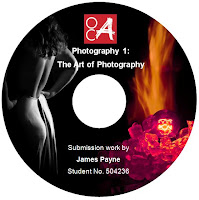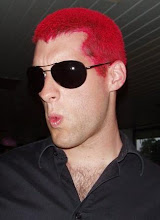 So, here I am at the end of my journey through TAOP. Journey is such a cliché word to use but it really has been just that: I have learned a lot and taken all of the points away from the course. I really do believe I have made a massive progression from the humble beginnings of Assignment 1 to this final write up for submission. There has been a transition from merely fulfilling the brief and becoming James the Photographer. I owe a massive amount of thanks to my tutor Joe Fox for his advice and encouragement throughout the journey as it was he that helped me realise that the course should be about my vision and pushing to confines of the assignment briefs. Once I realised this and started to truly analysis the potential of each chapter and draw inspiration from photographic artists I liked, TAOP became so much more than just a first venture into my creative studies. In many ways I am a little sad to see it end and looking back over my work I can see to many avenues that I could have taken. It truly is a document that can be readdressed and assignments can be redone on long weekends for personal projects seeing how much can be squeezed from the content.
So, here I am at the end of my journey through TAOP. Journey is such a cliché word to use but it really has been just that: I have learned a lot and taken all of the points away from the course. I really do believe I have made a massive progression from the humble beginnings of Assignment 1 to this final write up for submission. There has been a transition from merely fulfilling the brief and becoming James the Photographer. I owe a massive amount of thanks to my tutor Joe Fox for his advice and encouragement throughout the journey as it was he that helped me realise that the course should be about my vision and pushing to confines of the assignment briefs. Once I realised this and started to truly analysis the potential of each chapter and draw inspiration from photographic artists I liked, TAOP became so much more than just a first venture into my creative studies. In many ways I am a little sad to see it end and looking back over my work I can see to many avenues that I could have taken. It truly is a document that can be readdressed and assignments can be redone on long weekends for personal projects seeing how much can be squeezed from the content.I am very content with my submitted work for chapters 3, 4 and 5 and am particularly proud of pushing the limits of the brief for Assignment 4: Light. It called for a single object to be subjected to various lighting conditions in order to draw out certain qualities but it said nothing about the object being inanimate! A friend modelled for me and provided interesting, unique compositions for each frame as well as satisfying my enjoyment of extensive planning and elaborate staging. It also gave me the chance to experiment with home-made budget lighting equipment and planning for the position of the sun during particular times of the day. When you compare this to my earlier work, in particular ‘Pointed’ for Assignment 1, you can clearly see my ignorance and complete inability to recognise just how harsh and unpleasant highlights and shadows can be without an understanding of how light behaves. When you compare such an image with my work with small light sources for Assignment 4 you can clearly see a vast improvement.
Personally, given the importance of mastering the control of light, I would have preferred to have seen the chapter on Light come first in TAOP. My logical behind this is that, given the literal interpretation of the assignment, lessons from composition, focal length, frame elements and colour could be easily set aside to allow the student to gain an understanding of the behaviour of light and subsequently enhance their work in the proceeding chapters. Photography is essentially painting with light so it is my opinion that this fundamental aspect should be given first consideration. Indeed, the exercises on the temperature of light could be amalgamated into the colour chapter to form a rationalised focus on white-balance.




















